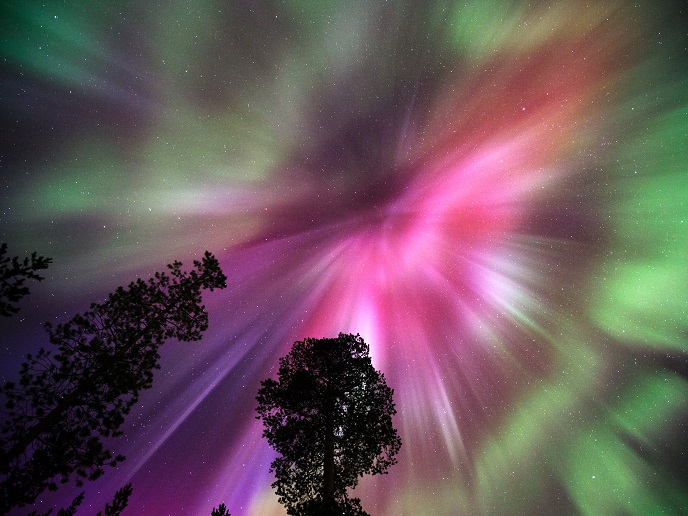Can we protect Earth from space weather?
In early September 1859, the Northern Lights could suddenly be seen as far south as the Caribbean. The cause was a geomagnetic solar storm – specifically a coronal mass ejection, now dubbed the ‘Carrington Event’, after the astronomer who recorded it. The solar eruption reached Earth in 17.6 hours, with disturbances lasting for around three days. “Contemporary accounts talk of telegraph equipment either not working, functioning without batteries switched on – thanks to this independent electromagnetic power source, or simply catching fire,” says Palmroth, of the University of Helsinki. Given our increased dependence on electronics, if a similar magnitude event were to happen today, would the impact be more wide-ranging and long-lasting? “We assume so, but don’t really know, and that’s what I am investigating,” adds Palmroth, a former Chair of the EU’s Space Advisory Group. “The historical records suggest that events of such magnitude can be expected every 100–150 years. I think I’ll witness the next one.”
What causes solar storms?
The sun constantly releases a stream of charged particles into space, both from fast bursts of high-energy but low-density particles from solar flares, or more slowly as plasma clouds, comprising lower-energy but high-density particles. Earth’s magnetic field deflects these particles to its polar regions, creating the polar aurora – although the impact stretches further. “Even if space is defined as starting at around 100 km from the ground, space weather can have effects back on the ground,” Palmroth explains. In 2012, NASA’s STEREO satellite observed a Carrington-scale solar eruption; luckily it missed Earth by a couple of days. If it had reached Earth’s magnetosphere, there would have likely been significant disruption to communication, power and transport networks. “Such changes to Earth’s magnetic field produce geomagnetically induced currents (GICs), while solar particles impede ionospheric radio signals and increase near-Earth space radiation due to trapped particles,” Palmroth summarises. Supercharged GICs can create extra direct currents (DCs) in power networks, shutting them down, as happened in Malmö, Sweden, in 2003. Solar particles disrupt communication signals by creating variable ionospheric density, compromising devices that use high-frequency bandwidths, such as radar. This would also render phone or car GPS navigation unreliable, and cause the loss of satellite time stamps essential to financial services and other industries. Increased near-Earth space radiation would have a direct impact on satellites used for weather, navigation, and Earth observation. Depending on their orbit, materials could be degraded by radiation exposure or completely destroyed by direct hits from high-energy charged particles travelling at the speed of light. “But this is informed speculation,” cautions Palmroth. “While we have many monitoring devices for terrestrial weather, for likely impacts on infrastructure from space weather we rely largely on modelling.”
Forecasting space weather
Thanks to an ERC grant over 15 years ago, Palmroth created a space environment modelling tool designed to take advantage of supercomputers that, at the time, didn’t yet exist. The resulting Vlasiator simulator, recently augmented through the PRESTISSIMO project, charts the location, speed and trajectory of high-energy particles flying through space. “To begin with, people thought I was crazy. Now we have the world’s most accurate space environment simulator using Europe’s largest supercomputers to visualise phenomena not possible before. Because Vlasiator is open-source, others are using it, including to model other planets,” adds Palmroth. Palmroth is now assessing likely Earth impacts from space weather, prioritising two main research questions: how GICs could impact power grids, and how particle flux and energy influence satellites. Both are difficult to research as they require commercially and politically sensitive information about the configuration of the power grids and satellites, so the team is currently working with Finnish data. “We know Finland’s power grids can withstand the most likely space weather effects because our transformers accommodate extra DCs better than most European countries,” says Palmroth. “Does that mean that in the worst-case scenario, across Europe only Finland keeps its lights on? We don’t know.” The CARRINGTON project is cooperating with the Finnish preparedness community to work on risk mitigation. “Against a Carrington-scale event, the question is: What can you do in 17 hours? You need a plan ready,” says Palmroth. Click here to find out more about Palmroth’s research: New modelling promises accurate future space weather forecasts
Keywords
PRESTISSIMO, space, weather, solar, storms, satellite, magnetosphere, Earth, particles, mitigation



